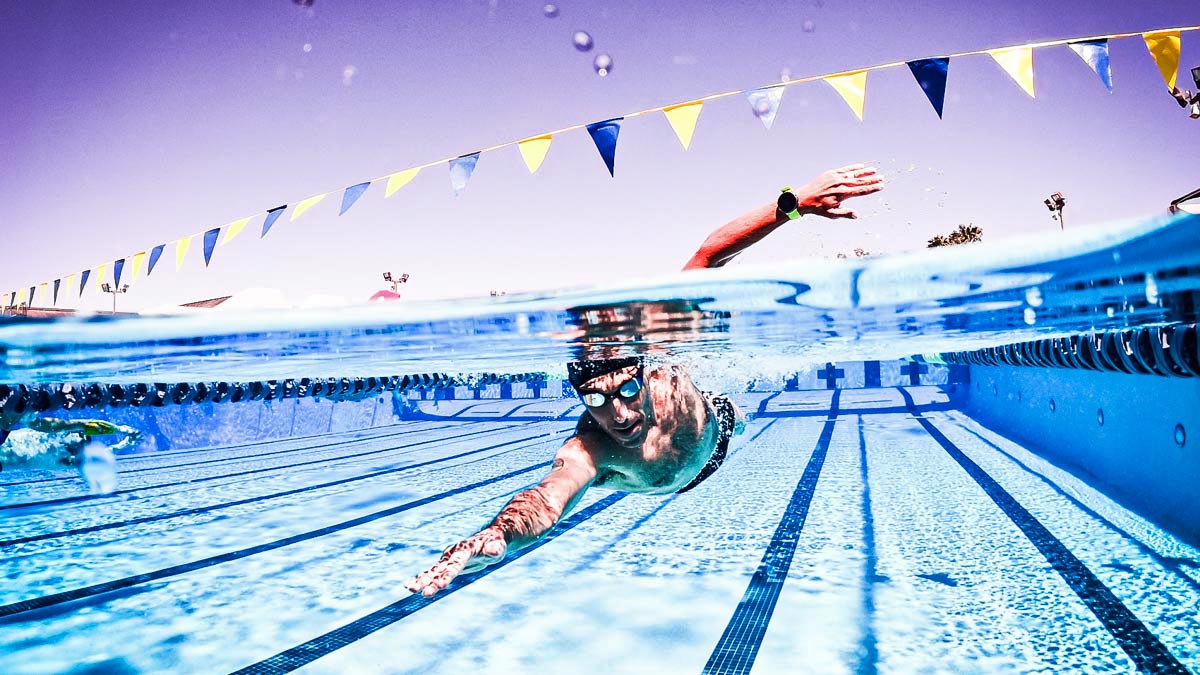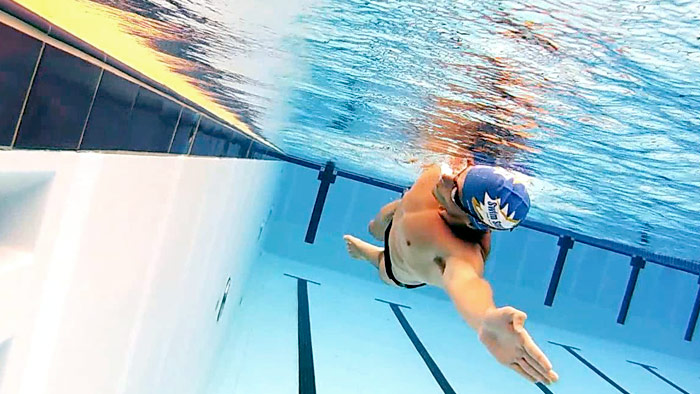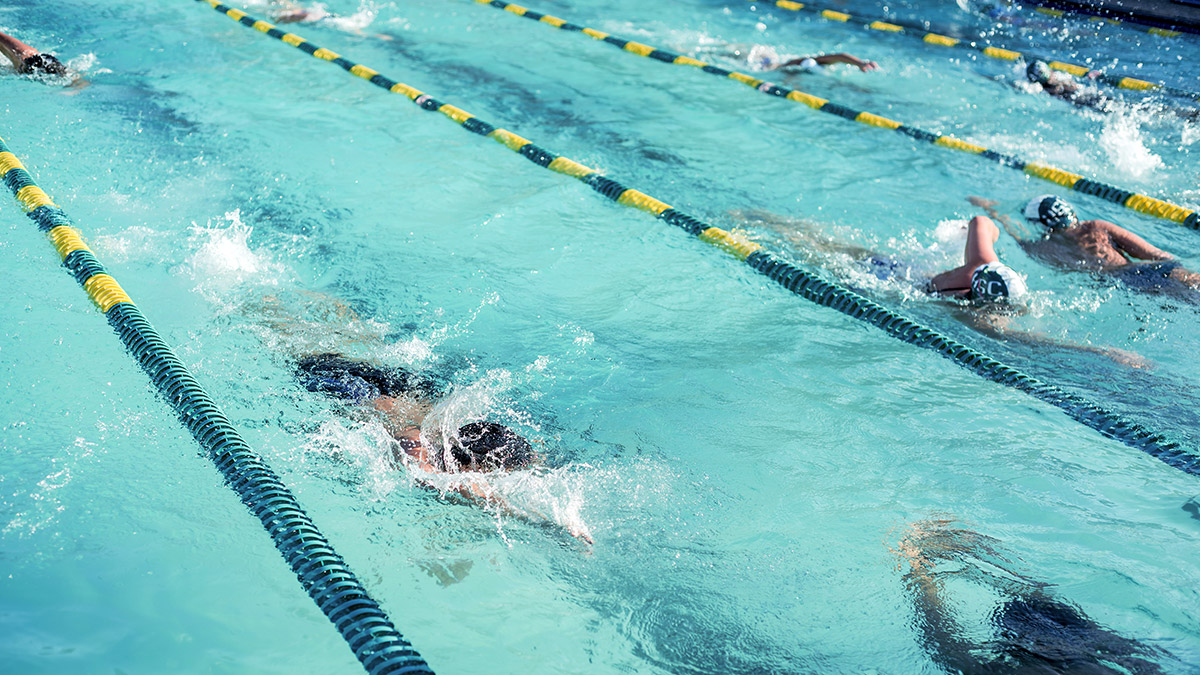During the shutdowns in the spring and summer of 2020, I saw many swimmers get faster after two or more months of no in-water training. The key? Targeted strength training and non-pool swim workouts using a Vasa Ergometer, Vasa Trainer or stretch cords.
Adding strength workouts may feel like you’re packing an already crowded plate, but it’s an important step for reducing injuries and improving performance. This article will outline some strategies on how you can seamlessly combine swim and strength sessions so that you do not have to choose one over the other.
Here are three strategies you can employ that combine swim/ strength workouts to get faster and save time.
Strategy 1: Swim + Strength
If you swim and lift at the same facility, combining your swim and strength sessions back to back will save you time and energy. I prefer for athletes to swim first, and then do strength work when possible. This saves time, since they enter the weight room warmed up and ready to get to work.
Most athletes have a finite amount of time to train, so we may shift their swim/ strength balance based on their goals and time of year. Here are two examples of how the time can be distributed if an athlete has 90 min to train.
Example one: Off season with Strength focus
45-minute swim with main set using paddles, followed by 45 min strength session.
Example two: In season with Long-course focus
60-70 min swim with a 20 min. strength maintenance session.
Strategy 2: Supplemental Swim Sessions
Many triathletes want to improve their swim, but doing so by increasing swim volume and frequency is challenging without sacrificing bike and run training. One solution is to add supplemental, swim-specific training outside the pool—especially before or after a strength session—utilizing stretch cords or a Vasa swim bench.
I discovered this method while working with ITU athletes, who would complete a short set (200 to 500m) of swim intervals at the end of a strength session. These could look like 8x25m holding best watts with a 30 second rest, or 6-10x50m at 30m race effort/20m max. with 30 sec rest—both could be duplicated with stretch cords in absence of an actual pool. Supplementing strength workouts with high quality power-based intervals can have a positive impact on an athlete’s swim with minimal time and energy.
Strategy 3: Combining Swim and Strength into one Session
When you are really time-crunched, merging your swim and strength session into one may be the answer. With a swim bench or stretch cords and basic strength equipment, you can create limitless options, even if you just have 30 minutes. Alternate each “swim” interval with strength exercises to keep the intensity and quality high.
Here is an example of a session that can be used whenever you have limited time:
Equipment: vasa ergometer, 25-35lb Kettlebell, and pull up bar (stretch cords can be substituted for the Vasa)
- Three minute swim warm up with 3×10 strokes right arm and 10 strokes left arm mixed in.
Main set is 3 rounds of the following circuit. Do not rest between each exercise; rest one-minute after each circuit is completed.
- 50 meters max sustainable watts on ergometer
- 5 reps overhead press on each arm
- 8 KB swings
- 50 meters max sustainable watts on ergometer
- 5 chin ups or pull ups
- 8 KB swings
- 50 meters max sustainable watts on ergometer
- 8 Goblet squats
- 8 KB swings
- Rest 1 minute
Complete 2 more rounds.
Using this formula, you can vary the length and intensity of the swim interval. For strength exercises, dumbbells, barbells and bands can be used. Strength exercises should include an upper body push, upper body pull and lower body push. In the example above I overloaded each set with a Kettlebell swing since it is an excellent posterior chain and core exercise.
Training consistency matters. When you are time crunched and need to do a swim and strength session, try these options, and adjust to your specific needs. These workouts will deliver a big bang for your training time.
Swim Strength Combo video









